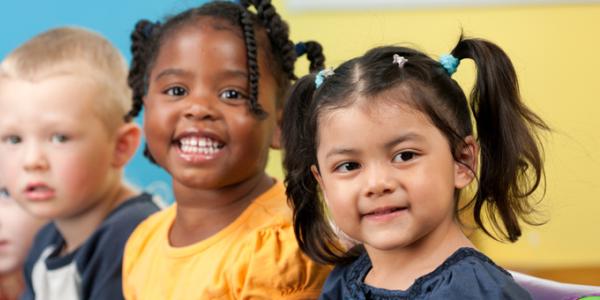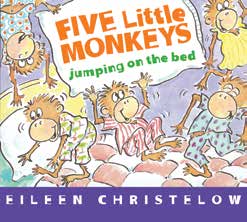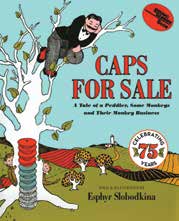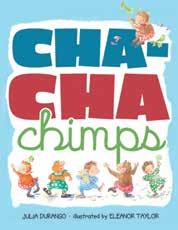Now Read This! Books that Bring Math to Life

You are here
You can transform story time into an engaging experience that develops children’s mathematical thinking and problem-solving skills!
The key to bringing math to life at story time is being clear about the difference between rote learning and mathematical big ideas. Rote learning is the process of learning something— like counting—by repeating it many times, without an emphasis on understanding it. Very young children who can recite the number words from 1 to 10 often do not understand that those words have meaning only when they’re used to count something. Story time can be a way to focus on the big ideas behind the math.
Counting allows us to answer the question “How many of what?” This understanding is grounded in making sense of the rules of rational counting. While two important rules— stable order and one-to-one correspondence, which most preschoolers master at around age 4—seem obvious to adults, young children need many experiences with these rules before they link saying number words to counting how many of something.
Teachers can help children connect counting to understanding how many by choosing books and activities that invite playing again and again with stable order and one-to-one correspondence.

Five Little Monkeys Jumping on the Bed
by Eileen Christelow. 2012. HMH Books for Young Readers.
Children will enjoy helping count down as each of the five little monkeys falls off the bed and bumps his head. Younger children may not be able to count down with their fingers or sing all of the words. But even toddlers can shake their fingers and chant the doctor’s order: “No more monkeys jumping on the bed!” Don’t insist that children fold their fingers down from five to zero. Model the countdown as you say the number words, planting the seeds for rational counting that requires mastery of rote counting and one-to-one correspondence.
Try This:
Have children act out the song using stick puppets. After each verse, stop and ask, “How many monkeys are still on the bed?” or “How many monkeys have a bumped head?” Record children’s responses on a T chart. Point out how the total number of monkeys across the two columns is always five, but each time, there is one less monkey on the bed and one more monkey with a bumped head. Children will love doing this activity again and again.

Caps for Sale: A Tale of a Peddler, Some Monkeys and Their Monkey Business
by Esphyr Slobodkina. [1940] 1987. HarperCollins.
This book might not look like it contains math concepts, but it actually has math for all kinds of monkey business! If you can, use the big-book version to help bring out the math ideas.
Try This:
Begin with a picture walk—previewing the pictures in a storybook to familiarize children with the story before reading. Point out how many caps the peddler has (four of each color, plus his own checked cap). Ask the children to explain what they think happened while he was asleep. Be sure to help them see that each monkey has one cap (this is one-to-one correspondence!). Return to the illustration of the peddler falling asleep with caps stacked on his head and the next picture showing the monkeys in the tree. Count the caps of each color and ask, “If the man had four brown caps when he fell asleep, how many monkeys in the tree are wearing brown caps?” Let children come up to the book so they can point to the caps as they count them.
This is another great story to act out. First, have each child make caps out of paper plates (you can find easy-to-follow directions online). Be sure to use only three or four colors. You can play the cap seller and stack all the caps, then pretend to sleep. Let the children, acting as the monkeys, tiptoe up, steal a cap, and move to the other side of the rug. Go through the fist-shaking, foot-stomping routine of the peddler while children play the parts of the monkeys. At the end, have the children sort themselves into groups by the color of their caps. Count how many are in each group and how many there are altogether.

Cha-Cha Chimps
by Julia Durango. Illus. by Eleanor Taylor. 2010. Simon & Schuster Books for Young Readers.
Try this:
This story is unmistakably a counting book—but it’s one that also builds in fabulous fun-for-the-tongue phonemic awareness and rational counting. Children will quickly pick up on the way numbers follow the stable order pattern as the 10 little chimps do a countdown dance before Mama sends them off to bed.
The math and the story are a little more complex than those in Caps for Sale. But the book is ideal for older preschoolers exploring how the stable order of our number structure is a pattern. As other jungle creatures enter Mambo Jamba’s Café, one more chimp joins in the dance, leaving one less chimp doing the cha-cha-cha.
When acting out or revisiting the book, draw attention to the growing pattern by creating a chart that shows how many chimps have quit doing the cha-cha-cha and how many are still shimmying away. You can also show how the numbers change in a very patterned way by opening the book at random and reading the page. Ask children to predict what will happen on the next page, including the number of chimps that will be on the righthand side, cha-cha-chaing. Encourage discussion about the way the text, illustrations, and layout all follow repeating patterns, but the number pattern has its own special math rule.
ENGAGE FAMILIES IN MATH!
Create a take-home activity. “We’ve just read this book at school. We hope you have fun reading it at home. After reading, try this!” Caps for Sale: Find all the hats and caps in your house. Sort them by different categories (colors, styles, etc.). Take turns putting them all on your head, counting each individual hat you add. Have fun!
Book Covers © Houghton Mifflin Harcourt; HarperCollins; Simon & Shuster
Mary Hynes-Berry, PhD, is a faculty member at Erikson Institute’s graduate school of early childhood education. She is also senior content developer for and a founding member of Erikson’s Early Math Collaborative, in Chicago, Illinois.
